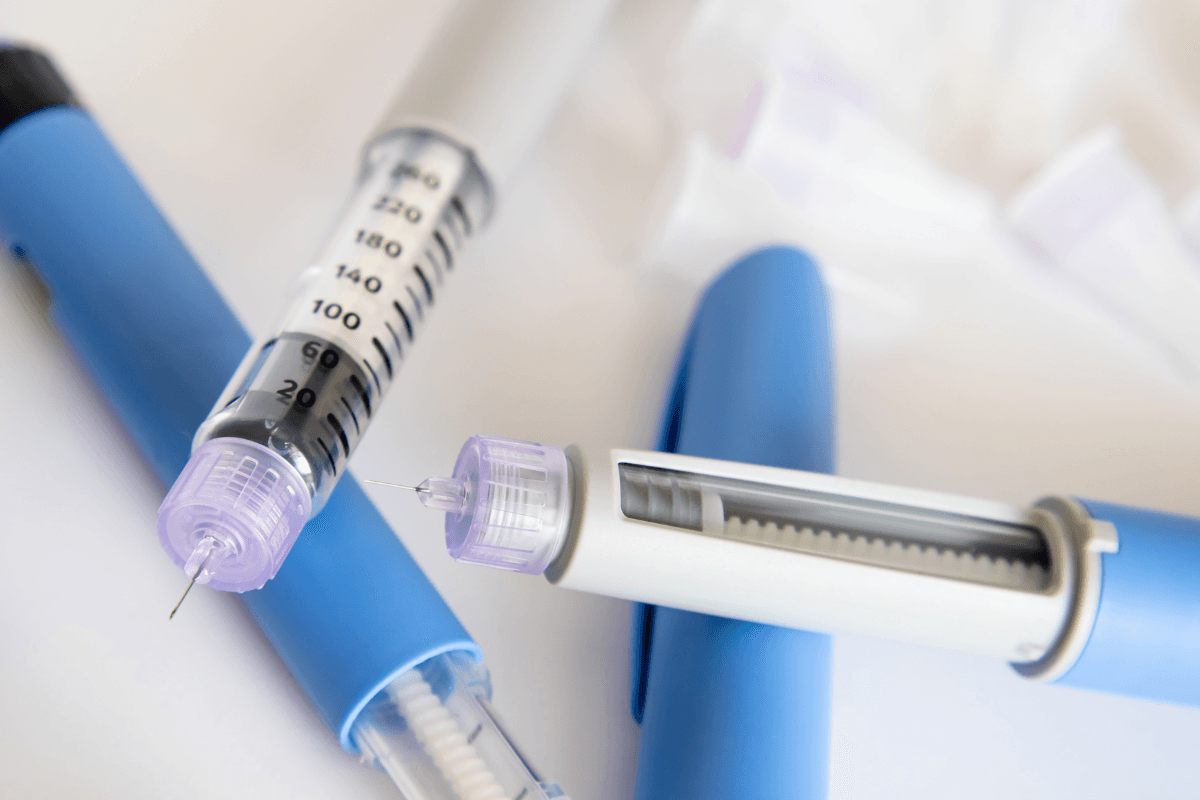People living with obstructive sleep apnea need clarity, not hype. This guide explores tirzepatide and sleep apnea with an evidence-first lens, translating new data into practical steps. We review how the medicine may help, where the research stands, and what recent regulatory updates mean for access and coverage. You will also find strategies to navigate prior authorizations while keeping core therapies, like CPAP, central to care.
Key Takeaways
- Evidence-based framing: current studies and regulatory updates summarized clearly.
- Whole-care approach: medications complement CPAP and weight management.
- Access guidance: documentation, prior authorization, and coverage tips.
- Safety-first: monitor side effects and coordinate across your care team.
Tirzepatide and Sleep Apnea: What We Know
Tirzepatide is a dual GIP/GLP-1 receptor agonist used for chronic weight management and type 2 diabetes. Many adults with obstructive sleep apnea (OSA) also live with obesity, so addressing weight can ease airway collapse during sleep. Early research suggests symptom improvements may track with sustained weight reduction and cardiometabolic benefits. These findings are encouraging, yet they should be integrated with established therapies rather than replace them.
OSA care remains multidisciplinary. Clinicians often combine continuous positive airway pressure (CPAP), mandibular advancement devices, positional strategies, and weight-loss interventions. Patients benefit from clear goals and shared decision-making. For a broader context on mechanisms and care models, see GLP-1 Receptor Agonists Overview for background on how these medicines relate to OSA at GLP-1 Receptor Agonists Overview.
How Tirzepatide May Work in OSA
Several pathways likely contribute to improved symptoms. Weight reduction can lessen peripharyngeal fat and reduce upper-airway collapsibility. Lower inflammation and improved insulin sensitivity may also support sleep health. Patients often report more daytime energy when metabolic markers stabilize, which can help reinforce consistent CPAP use and other behavioral changes.
A common question is how does tirzepatide help sleep apnea without relying only on weight loss. The answer seems multifactorial. Reduced visceral fat improves ventilatory control and lowers overnight hypoxemia. Appetite regulation may reduce late-night reflux triggers. Improved cardiometabolic status can reduce fluid shifts that worsen airway narrowing in recumbency. These effects differ across individuals and typically unfold gradually with sustained care.
What the Evidence Shows
Early trials evaluated apnea–hypopnea index (AHI), oxygen-desaturation parameters, and patient-reported outcomes. Investigators also tracked body weight, blood pressure, and quality-of-life metrics. While results vary by study design and baseline severity, signals suggest that multi-mechanistic weight loss can improve OSA measures and daytime functioning. Long-term adherence and support remain essential to maintain gains.
When reading a tirzepatide sleep apnea study, look for core endpoints such as AHI change, CPAP usage metrics, and sleepiness scales. Pay attention to subgroup analyses by baseline BMI and OSA severity. Longer follow-up provides better insight into sustainability and safety. For regulatory-grade evidence, compare outcomes with established treatments and note whether benefits persist after weight plateaus.
Regulatory Status and Labeling
Regulatory decisions evolve as new data emerge. The U.S. Food and Drug Administration periodically updates labeling and approvals based on robust clinical data packages. For the latest status, consult the FDA’s primary sources. As of late 2024, the agency announced new labeling related to OSA for tirzepatide. You can review the FDA press release for authoritative details at FDA press materials.
Because many readers ask is zepbound fda approved for sleep apnea, it is vital to rely on current agency documents and updated medication guides. Labeling defines who may be eligible, what indications apply, and the safety information clinicians consider. A formal label change can shape payer coverage and clinical pathways. Always verify the most recent label before pursuing authorization.
Insurance Access and Documentation Tips
Coverage often hinges on diagnosis, severity, BMI, and documented treatment goals. Payers also weigh prior treatment attempts, such as CPAP tolerance or alternative device trials. Clear documentation improves your chances and speeds reviews. Keep copies of sleep studies, clinical notes, and CPAP adherence summaries when available. A short letter from your clinician can connect OSA severity with health risks and specify the medication’s role.
Many ask will insurance cover zepbound for sleep apnea when OSA coexists with obesity. Policies differ by insurer and plan. Prior authorization criteria may include AHI thresholds, BMI ranges, and comorbidity risks. If your plan lists a specific medical exception process, use it. Make sure your clinical notes emphasize functional limitations, cardiovascular risk, and CPAP history. For additional context on metabolic care, see Superfoods for Weight Loss for supportive nutrition strategies at Superfoods for Weight Loss.
What to Gather Before You Apply
Prepare a concise packet. Include your sleep study report, key vitals with BMI, a summary of symptoms and daytime impacts, and a history of prior interventions. Add recent lab values if available, such as A1c or lipid panels, to contextualize cardiometabolic risk. If you use CPAP, include compliance reports or clinician notes indicating attempts to optimize settings and mask fit. A brief statement from your prescriber should tie OSA risks, weight-related factors, and safety monitoring to the proposed therapy.
Tip: Track outcomes monthly. Record changes in sleepiness, snoring reports, and CPAP tolerance. Small, consistent notes help renew authorizations and demonstrate real-world benefit. For aging-related nutrition that supports durable lifestyle change, see Bone Health Guide for micronutrient considerations at Bone Health Guide.
Mounjaro, Coverage Timing, and Access
Some plans distinguish between brand indications. Formularies may prefer one product or require step therapy. Policies can evolve after new regulatory decisions or published guidance. Patients should check their plan’s formulary and medical policy pages, then confirm with a benefits representative and their clinic’s prior-authorization team.
If you are wondering will insurance cover mounjaro for sleep apnea, review the plan’s criteria and any medical exception pathways. Ask about documentation requirements and whether coverage differs for OSA versus weight management alone. If your plan references updated FDA labeling, confirm the effective date and whether retroactive coverage applies. Keep copies of all communications for appeals.
Care Pathways With CPAP and Oral Devices
Medication should complement, not replace, core OSA therapies. CPAP remains the most studied modality with clear benefits across severities. Mandibular advancement devices can help in selected cases, often with milder disease or CPAP intolerance. Positional therapy, nasal patency strategies, and weight management contribute meaningful support over time. These tools, coordinated together, often deliver the best outcomes.
Many people seek a new treatment for sleep apnea without mask because nightly device use can be challenging. Realistically, alternatives work best when matched carefully to phenotype and severity. Oral appliances require follow-up and, ideally, repeat sleep testing to verify benefit. Surgical options exist for specific anatomical patterns but carry risks and recovery time. Discuss realistic goals with your care team and plan a stepwise approach.
Safety, Side Effects, and Monitoring
Like all medications that affect appetite and digestion, tirzepatide can cause gastrointestinal side effects. Nausea, fullness, or changes in bowel habits may occur and often vary by dose and timing. Hydration, fiber balance, and meal spacing can help. Collaborate with your prescriber to navigate adjustments within labeled guidance. Report new or worsening symptoms promptly, especially if they limit nutrition or daily function.
Coordinate care if you live with ENT or vestibular conditions that affect balance or hearing. For background reading on dizziness, see What Is Vertigo for core concepts at What Is Vertigo. If you have questions about vestibular therapies, Betahistine Side Effects covers risks and common reactions at Betahistine Side Effects. For additional reference on a related medicine, see Betahistine to understand indications discussed with clinicians at Betahistine.
How It Compares to Semaglutide
Both tirzepatide and semaglutide act on incretin pathways, with different receptor targets and clinical profiles. Comparative conclusions depend on study design, dose, and baseline patient characteristics. In practice, formulary access, side-effect tolerance, and individual response often guide the choice. Shared decision-making helps align expectations and monitoring plans regardless of the specific agent.
Interest in a semaglutide sleep apnea trial reflects a broader search for medication-assisted improvements. Cross-trial comparisons can be misleading, so focus on endpoints, follow-up duration, and safety signals within each program. Discuss alternatives if side effects or access barriers arise. For readers managing related ear disorders, Ménière’s Disease Insights offers context on fluctuating symptoms at Ménière’s Disease Insights.
Evidence Standards and Clinical Guidance
When interpreting data, prioritize peer-reviewed publications and regulatory-grade analyses. For example, a recent NEJM study examined tirzepatide in OSA with rigorous endpoints and detailed safety assessments; you can review the NEJM study for a balanced perspective at NEJM study. Standards from professional societies also matter when integrating new therapies into care plans.
CPAP remains the established first-line therapy for most adults with OSA. The American Academy of Sleep Medicine maintains practice guidelines that synthesize evidence across modalities. Reviewing a clinical practice guideline can help frame how medications fit within multimodal care; see the AASM resources at clinical practice guideline.
Choosing Medications Thoughtfully
People often ask what is the best medication for sleep apnea when symptoms disrupt sleep and daily life. There is no single “best” medicine for OSA itself. Core device-based therapies directly target airway collapse. Medications may help by addressing contributors such as obesity, cardiometabolic risk, or nasal inflammation. The most effective plan is individualized, measured by outcomes, and reassessed regularly.
Partner with clinicians to define milestones. Examples include AHI targets, daytime sleepiness scores, and blood pressure goals. Document progress and setbacks. If therapy changes are needed, update your plan methodically. For supportive nutrition changes that complement metabolic care, see Superfoods for Weight Loss with practical meal ideas at Superfoods for Weight Loss. If balance symptoms complicate sleep, discuss whether therapies like Vertin are appropriate; for context on that medicine, see Vertin for its clinical use cases at Vertin.
Regulatory and Payer Updates: Staying Current
Policy changes can affect coverage windows and renewal cycles. Track your insurer’s bulletins and formulary updates after major FDA announcements. If you face a denial, ask for the specific reason, then address it with targeted documentation or an appeal letter. Each plan has its own rhythm and criteria, so persistence and specificity help.
Readers often follow posts and forums about which plans cover certain medications. While community reports can help set expectations, rely on official plan documents during applications. If questions arise about new indications or comparative options, review primary sources and updated labeling. For broader sleep-breathing context, revisit GLP-1 Receptor Agonists Overview to align expectations with current evidence at GLP-1 Receptor Agonists Overview.
Recap
Tirzepatide offers a promising adjunct for adults with OSA and obesity, especially when combined with CPAP, oral devices, and sustainable lifestyle supports. Access depends on evolving labeling, payer criteria, and clear documentation. Stay anchored in high-quality evidence and keep safety monitoring central. With steady teamwork and realistic goals, many patients can see meaningful, durable improvements.
Note: For regulatory details tied to OSA indications, start with the FDA press materials; see the latest announcements at FDA press materials for authoritative updates.
This content is for informational purposes only and is not a substitute for professional medical advice.

